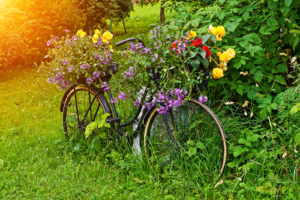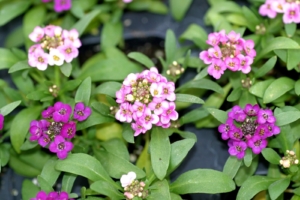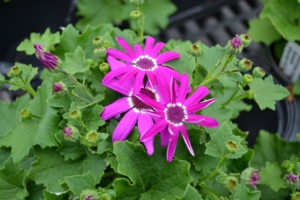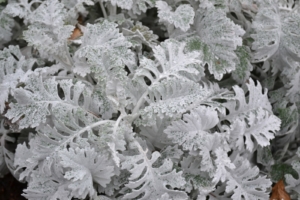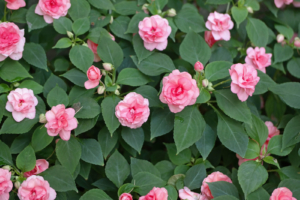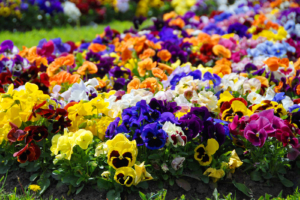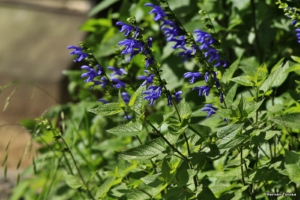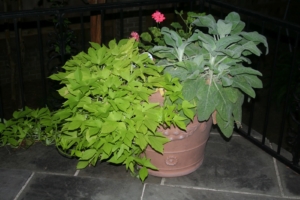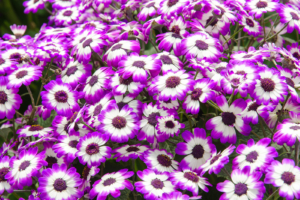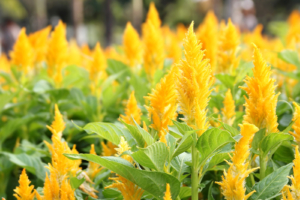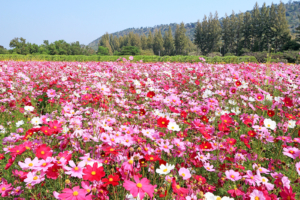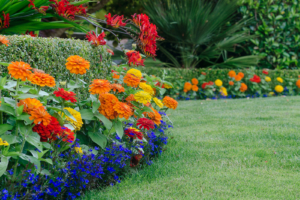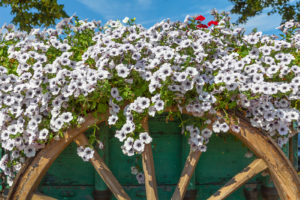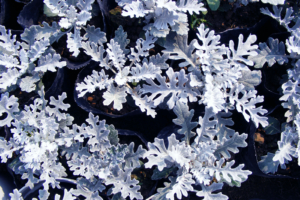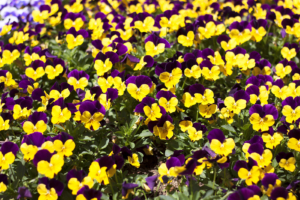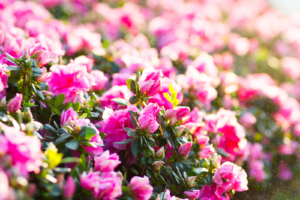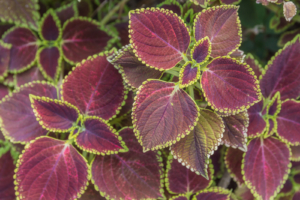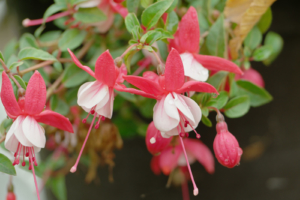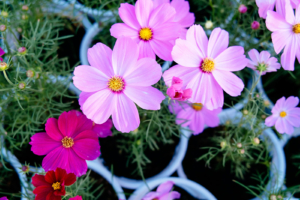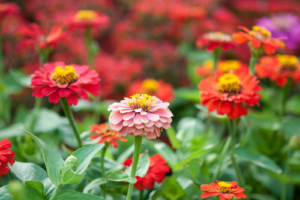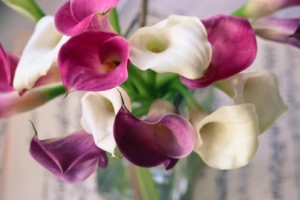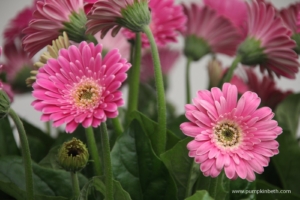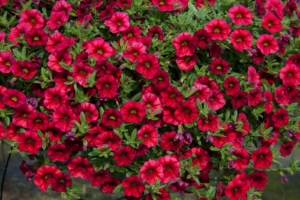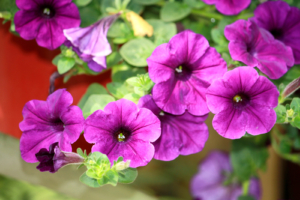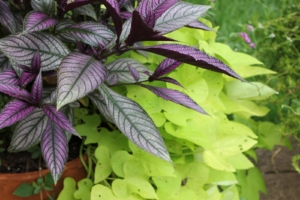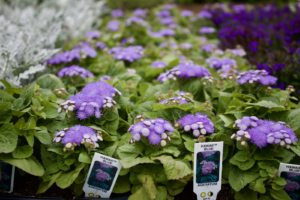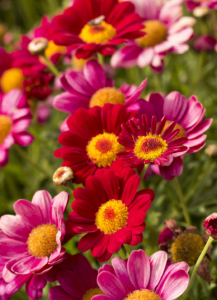Seasonal Color / Annuals – Goffle Brook Farms
Strictly speaking, an annual plant is one that completes its growing cycle (grows from seed, flowers and produces seed) in the course of a single growing season. In other words, annuals pack a lot of living into a short span of time. One of the best things about annuals is their incredible diversity and versatility. Using them allows you to compose really exciting combinations of color, form and texture that will last all season long. Colors range from bright midsummer favorites such as zinnias and Mexican sunflowers, to the subtler pastel shades of stock or lavatera.
You can also select annuals for your garden based on characteristics other than flower color. There are annuals that are tall, medium, short or climbing; ones that prefer either full sun or partial shade; and those with special virtues, such as delightful fragrance (stock, mignonette, nicotiana) or attractive foliage (caladium, coleus, dusty miller).
Whether it be a small garden bed beside a patio table where you take your morning java or a full blown forma landscape; annuals fit wonderfully into the scheme. As you design, bear in mind that bright and exuberant colors make a garden appear smaller than it is in actuality. Cooler subdued tones will have the opposite effect. A mixed spring border pops with bright tones or yellows, reds, blue and orange.
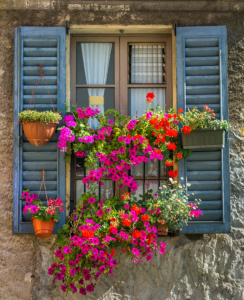 Use them in interesting ways to create focal points; an example of which is this old “country style farmhouse window” framed and accented with cascading petunias in containers, accenting the shutters and the stone structure of the home. Annuals with their different shapes, sizes and growing habits make ideal container plantings. Just be sure they have the same feeding and watering requirements and you’re good to go.
Use them in interesting ways to create focal points; an example of which is this old “country style farmhouse window” framed and accented with cascading petunias in containers, accenting the shutters and the stone structure of the home. Annuals with their different shapes, sizes and growing habits make ideal container plantings. Just be sure they have the same feeding and watering requirements and you’re good to go.
If you like a vivid color scheme, try marigolds, salvia, snapdragons, or celosia. For subtler tones, select the blues and violets of pansies, ageratums, or lobelias for a cooler, more tranquil effect. A mixture of Shirley poppies, annual chrysanthemums, and California poppies gives an informal, country look to a suburban garden. Cosmos and spider flower, with an edging of sweet alyssum, would also look lovely.
If you’d like a more formal look, stick with beds of one variety of annual. Good choices include geraniums, marigolds, and petunias. For contrast, add a silvery dusty-miller edging. Flower beds should be geared to the existing climate and soil conditions. In a dry-soil area, a garden could include statice, ice plant, daisies, portulaca, and California poppies. Sweet alyssum, zinnia, and vinca also do well in dry soil. Adding organic matter prior to planting helps conserve soil moisture in areas where water is scarce. Cooler, moister annual beds are best planted with flowers such as browallia, lobelia, pansies, and salpiglossis. A mulch helps keep the soil cool and moist all season long.
When selecting annuals for your flower beds, remember that the most interesting combinations come from mixing plant sizes and shapes. For example, tall, spiked African marigolds look good behind bushy plants of cosmos, which taper down to mounds of dahlias or celosia. In the foreground, you can use ground-hugging gazania, annual phlox, dianthus, or verbena. Flowers and foliage also offer a variety of sizes, shapes, and textures, and are effective when mixed. The daisy-like blossoms of gaillardia, spikes of salvia, and puffs of ageratum go well together. Foliage can be fine-textured, like the leaves on cosmos, or coarse, like those on the sunflower. Consider, too, the silver leaves of dusty-miller, the bronze of some begonias, the patterns of coleus, or the scalloping of nasturtium leaves.
The Annuals of Goffle Brook Farms
It was such a pleasure to sink one’s hands into the warm earth, to feel at one’s fingertips the possibilities of the new season.
“However many years she lived, Mary always felt that ‘she should never forget that first morning when her garden began to grow’.”
“In the spring, at the end of the day, you should smell like dirt.”
Annuals Tips and Care
Can be direct-sown in the garden as early in the spring as the soil can be worked. For an earlier start, sow them indoors in flats eight to ten weeks before the last spring frost date, and transplant them to the garden about a month later, after hardening them off.
Some hardy annuals can also be direct-seeded in the fall, and these plants will flower much earlier than plants seeded in the spring. When fall seeding, plant the seeds a bit deeper than you would in the spring, and spread some mulch over the seedbed after the ground has frozen.
Examples of hardy annuals include bachelor’s-buttons, calendula, spider flower (Cleome hasslerana), pinks (Dianthus spp.), larkspur, linaria, Shirley poppies (Papaver rhoeas), nigella (love-in-a-mist), scabiosa (pincushion flower), snapdragons, lavatera, annual baby’s-breath (Gypsophila elegans), heliotrope, stocks and sweet peas.
These can be direct-sown outdoors after the threat of hard frost (temperatures below 25°F) is past. Indoors, start seeds in flats six to eight weeks before the last spring frost date, and harden off the plants before transplanting them to the garden. Once they have hardened off, half-hardy annuals can withstand a light frost.
Examples include statice, nicotiana, painted-tongue (Salpiglossis sinuata), China aster (Callistephus chinensis), and various types of salvias and chrysanthemums.
Seed can be sown directly in the garden only after all danger of frost is past. For an earlier start, sow seed indoors four to six weeks before the last spring frost date for your area. Examples include marigolds, morning glories, zinnias, sunflowers and tithonia (Mexican sunflower), cosmos, amaranth, ageratum, celosia and gomphrena (globe amaranth).
In general, annuals prefer well-drained soil with a pH between 6.3 and 6.7. Digging in a good quantity of peat moss or compost will help to build up the soil’s organic matter and allow the plants’ roots to spread quickly and get off to a good start.
Set out young plants at the recommended spacing, to prevent them from crowding each other once they have grown and matured. If you’ve purchased plants in flats from a garden center, the plants will likely be somewhat potbound when you remove them from their cells or containers. Before placing them in the planting hole, gently break apart the root mass; this encourages roots to spread quickly into the surrounding soil. Fertilize at planting time with an organic or slow-release fertilizer.
You need to pay attention to whether a particular plant is hardy, half-hardy or tender before deciding when to transplant it. Some nurseries sell plants with labels that identify hardiness; when in doubt, put your annuals out after all danger of frost has passed. Another crucial factor, of course, is whether a particular plant prefers sun or partial shade.
If you need to hold plants in flats for more than a couple of days at home, be sure to water them and keep them in a partly shady, protected spot, such as a porch or under a tree. Don’t leave them in a garage or other structure where you store cars or gasoline-powered machines; ethylene gas can cause flower damage and leaf drop. The best advice is to transplant annuals to the garden as soon as possible after bringing them home.
Once they start blooming, most annuals will flower all season long, until cold temperatures or frost put an end to their display. However, to keep them flowering and looking good, you will need to perform some simple but easy maintenance.
Deadheading is the most important task, and it involves pinching off old flowers just as they begin to fade. The reason for doing this is simple. Annuals live to flower quickly, produce seed and die. So long as you keep deadheading blossoms, the plants will continue to produce flowers; once you stop, the plants will reduce or stop flowering, and put their energy into maturing seeds. Pinching off spent blooms is quick and easy, and it ensures season-long bloom.
If you’ve fertilized at planting time as recommended with an granular, organic, slow-release fertilizer, you shouldn’t have to fertilize annuals again during the season. With annuals, the flowers are the thing, and over fertilizing can lead to lush foliage growth, which is really beside the point. The primary exception is container-grown plants, which usually need to be fertilized with water-soluble fertilizer every couple of weeks to maintain a colorful show.
Annuals have shallow root systems and so require a regular supply of water. Avoid overhead watering if possible, which can stain some types of flowers (such as petunias), and make them look unattractive. It also can contribute to a buildup of botrytis fungus, which can affect plants such as zinnias, geraniums, and marigolds. For best results, use a soaker hose or a drip irrigation system, or direct your watering can right at soil level.
Why Shop at Goffle Brook Farms
- Courteous, knowledgeable and professional staff
- Locally Grown Fresh Seasonal Produce
- Quality Perennials – Annuals – Herbs and Garden Plants
- Full-scale Garden Center on Premises
- Conveniently located in Ridgewood, New Jersey
- Open 7 days a week from March 15th through Christmas Eve
- Family owned and operated since May 1st, 1968
- Serving Bergen County for over FIFTY years
What Our Customer’s Say
This is such a great place. Goffle Brook Farm & Garden Center has friendly and helpful staff that seem to really appreciate your business. They have a great selection of plants, flowers, gardening supplies, great FRESH local produce and I am sure tons of stuff I have yet to discover. The staff is very knowledgeable and always takes the time to walk me through any garden problem or question I have.
I’ve been going to Goffle Brook Farm & Garden Center regularly for the past year since my family moved to the area and every time I go I leave happy. What more can you ask for?They will have my loyal business. I think they deserve your business too.
Really cute garden center. My boyfriend and I stopped by to get some pumpkins. They had a great variety of both small and large pumpkins. They also have a small petting zoo with goats, sheep, and a pig. They have a small variety of produce for purchase inside. We wound up sampling cider they were selling and bought that as well as it was delicious. We may go back to get more. Employees were very helpful and friendly.
Highly recommend this garden center.

